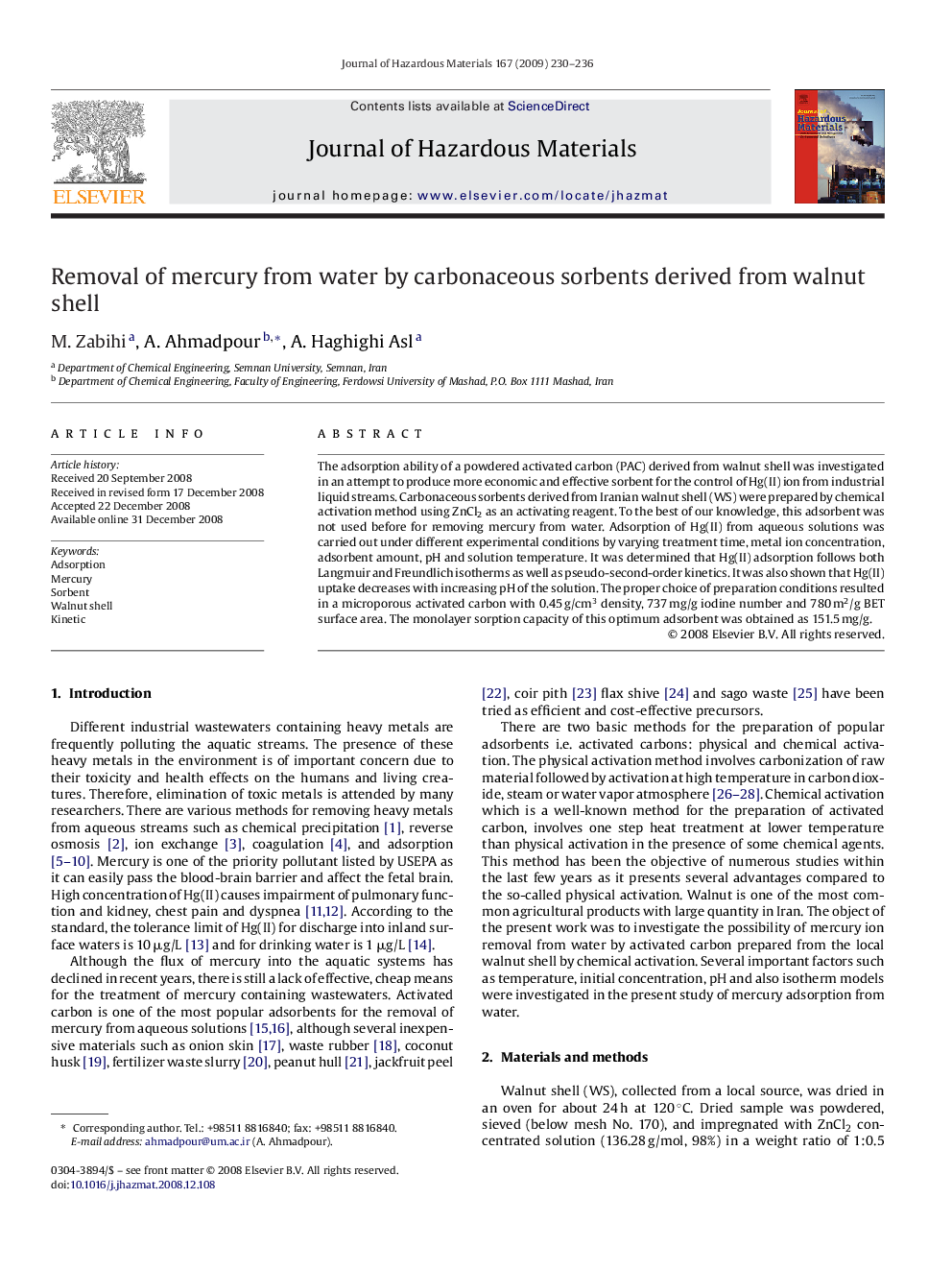| Article ID | Journal | Published Year | Pages | File Type |
|---|---|---|---|---|
| 581772 | Journal of Hazardous Materials | 2009 | 7 Pages |
Abstract
The adsorption ability of a powdered activated carbon (PAC) derived from walnut shell was investigated in an attempt to produce more economic and effective sorbent for the control of Hg(II) ion from industrial liquid streams. Carbonaceous sorbents derived from Iranian walnut shell (WS) were prepared by chemical activation method using ZnCl2 as an activating reagent. To the best of our knowledge, this adsorbent was not used before for removing mercury from water. Adsorption of Hg(II) from aqueous solutions was carried out under different experimental conditions by varying treatment time, metal ion concentration, adsorbent amount, pH and solution temperature. It was determined that Hg(II) adsorption follows both Langmuir and Freundlich isotherms as well as pseudo-second-order kinetics. It was also shown that Hg(II) uptake decreases with increasing pH of the solution. The proper choice of preparation conditions resulted in a microporous activated carbon with 0.45Â g/cm3 density, 737Â mg/g iodine number and 780Â m2/g BET surface area. The monolayer sorption capacity of this optimum adsorbent was obtained as 151.5Â mg/g.
Related Topics
Physical Sciences and Engineering
Chemical Engineering
Chemical Health and Safety
Authors
M. Zabihi, A. Ahmadpour, A. Haghighi Asl,
